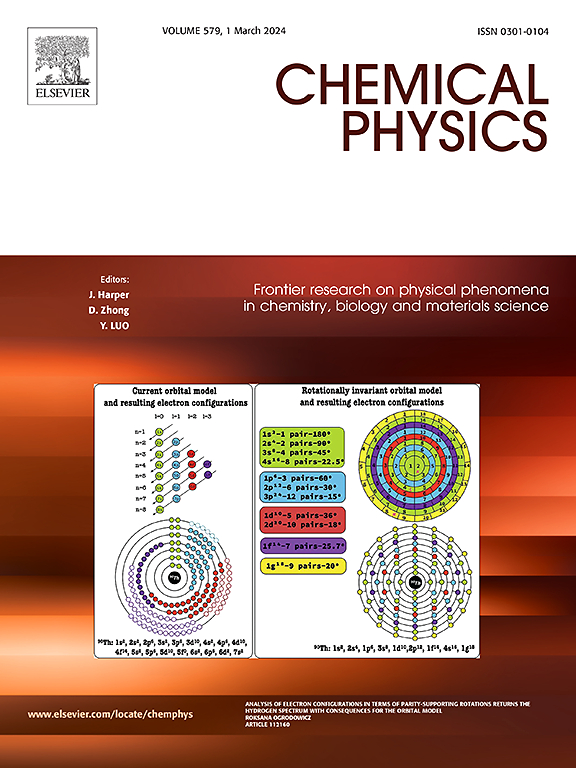双表面活性剂棒介孔复合锂离子筛PVB-HTO-1吸附液态资源中的锂离子
IF 2
3区 化学
Q4 CHEMISTRY, PHYSICAL
引用次数: 0
摘要
尖晶石型钛基锂离子筛H4Ti5O12具有优异的理论吸附能力和选择性。但现有研究制备的尖晶石型锂吸附剂存在吸附性差、可回收性差、回收困难等问题。为解决上述问题,本文首次合成了双表面活性剂改性聚乙烯醇丁醛- h4ti5o12 -1 (PVB-HTO-1)复合介孔离子筛。通过添加CTAB和F127两种表面活性剂,合成了介孔结构的亲水锂离子筛HTO-1。然后将改性后的离子筛与PVB复合,制成直径不大于0.5 mm的细棒状复合材料PVB- hto -1,解决了粉末状离子筛回收难的工业应用限制。双组分表面活性剂衍生的离子筛PVB-HTO-1具有优异的亲水性,并具有多孔介孔框架,有利于离子交换过程,在3小时内达到吸附平衡。最大吸附量为53.25 mg/g。即使经过5次吸附和解吸循环后,材料的吸附容量仍保持在初始值的90% %以上,表明其具有强大的循环稳定性。PVB-HTO-1对Li+离子的吸附符合准二级动力学模型,符合Langmuir等温吸附模型。本文章由计算机程序翻译,如有差异,请以英文原文为准。

Adsorption of lithium ions from liquid resources by dual surfactant rod mesoporous composite lithium-ion sieve PVB-HTO-1
Spinel-type titanium-based lithium-ion sieve H4Ti5O12 has excellent theoretical adsorption capacity and selectivity. Still, spinel-type lithium adsorbents prepared in existing studies have poor adsorption, poor recyclability, and difficulty in recovery. To solve the above problems, composite mesoporous ion sieves, Polyvinyl Butyral-H4Ti5O12–1 (PVB-HTO-1) modified with dual surfactants, were synthesized for the first time in this paper. Hydrophilic lithium-ion sieve HTO-1 with a mesoporous structure was synthesized by adding two surfactants, CTAB and F127. Then the modified ion sieve was composited with PVB to make a fine rod-like composite material, PVB-HTO-1, with a diameter of no more than 0.5 mm, to solve the limitation of the industrial application that the recycling of powdered ion sieve is difficult. The bi-component surfactant-derived ion sieve, PVB-HTO-1, exhibits superior hydrophilicity and possesses a porous mesoporous framework that facilitates ion exchange processes, achieving adsorption equilibrium within a timeframe of three hours. It demonstrates a remarkable maximum adsorption capacity of 53.25 mg/g. Even after undergoing five cycles of adsorption and desorption, the material's adsorption capacity remains at over 90 % of its initial value, indicative of its robust cyclic stability. The uptake of Li+ ions by PVB-HTO-1 aligns with the pseudo-second-order kinetic model and conforms to the Langmuir isothermal adsorption model.
求助全文
通过发布文献求助,成功后即可免费获取论文全文。
去求助
来源期刊

Chemical Physics
化学-物理:原子、分子和化学物理
CiteScore
4.60
自引率
4.30%
发文量
278
审稿时长
39 days
期刊介绍:
Chemical Physics publishes experimental and theoretical papers on all aspects of chemical physics. In this journal, experiments are related to theory, and in turn theoretical papers are related to present or future experiments. Subjects covered include: spectroscopy and molecular structure, interacting systems, relaxation phenomena, biological systems, materials, fundamental problems in molecular reactivity, molecular quantum theory and statistical mechanics. Computational chemistry studies of routine character are not appropriate for this journal.
 求助内容:
求助内容: 应助结果提醒方式:
应助结果提醒方式:


